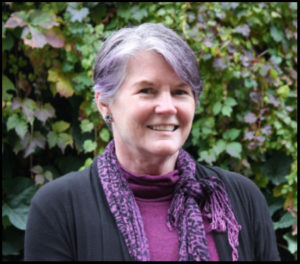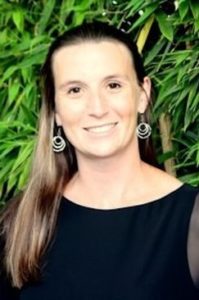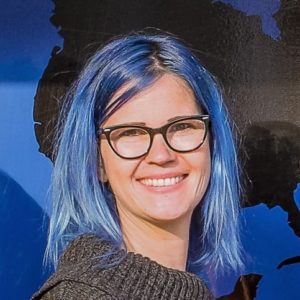UPDATED: Vera Kirkpatrick, who grew up in an orphanage and was proudly frugal her whole life, built a welcoming home in Ashland using century-old posts and beams long before reclaimed wood was a status symbol. The stay-at-home mom on a tight budget also designed open rooms and decorated in a timeless, spare Scandinavian style that remains desirable.
Beautifully rustic, hand-chiseled pine and cedar timbers are fitted with wooden pegs, but new construction materials and techniques like passive solar were employed throughout the 3,721 square feet of living space.
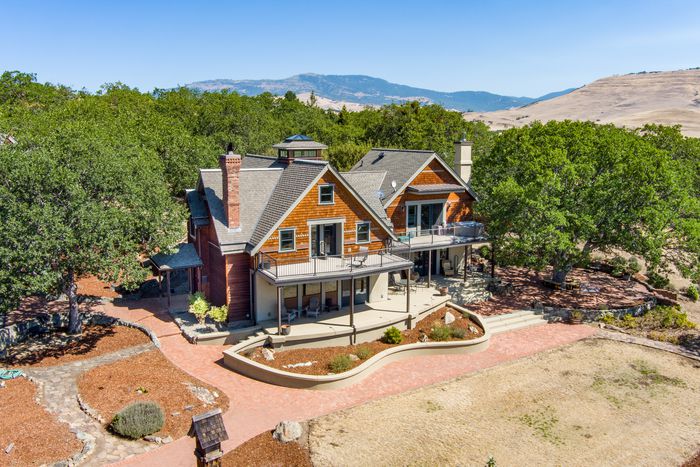
Steel post braces are bolted onto concrete footings for seismic support and highly insulated walls and ceilings are painted white or clad in naturally stained shiplap.
Energy-saving radiant heat rises from the foundation through oversized, gray porcelain floor tiles from Italy. A fireplace in the living room has a custom stone surround as does a Tulikivi masonry heater in the newly expanded kitchen’s dining space.
Kirkpatrick died in 2018 and her husband of 43 years, Peter, is selling their 10-acre property near Emigrant Lake to move closer to their grown sons’ families in Eugene and Portland.
“It’s an amazing, romantic love story,” says Dyan Lane, who with DeAnna Sickler of John L. Scott Real Estate of Ashland has the listing for the handsome, three-level house, which is outlined by curving, low garden walls and enhanced by a brick terrace circling a 100-year-old oak tree.
“Their story, the style, where all the different materials came from and Vera’s vision are unlike anything I’ve seen before,” she says.
The asking price for the property at 10950 Corp Ranch Road: $1.5 million. An adjacent 10-acre parcel with a well and irrigation rights valued at $500,000 is being kept by the family.
“It’s the perfect house for someone who wants a unique home rather than a cookie-cutter one in a subdivision where the story of the neighbor’s house is the same as yours,” says Lane.
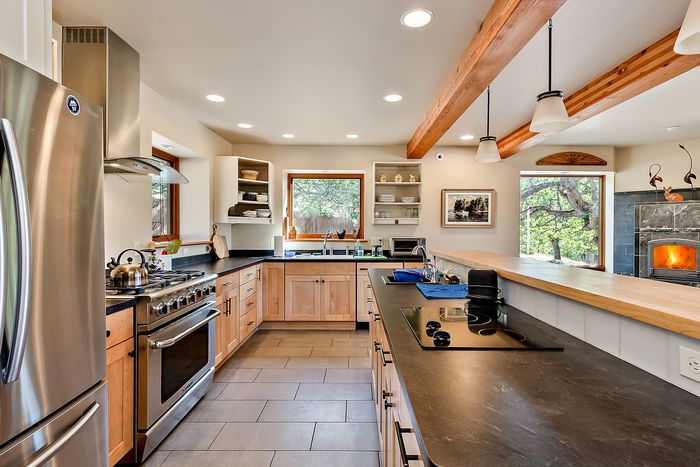
Old meets new
Peter Kirkpatrick recalls that he was chasing jobs as a magazine ad salesman in Aspen, then Manhattan before finally landing in Southern Oregon in 1982.
The couple was renting a place in Ashland when the landlord decided to raise the rent $15 a month. To think through their options, Vera drove their sons, Pete, who was 4, and Carter, 2, five miles out of the city to Emigrant Lake.
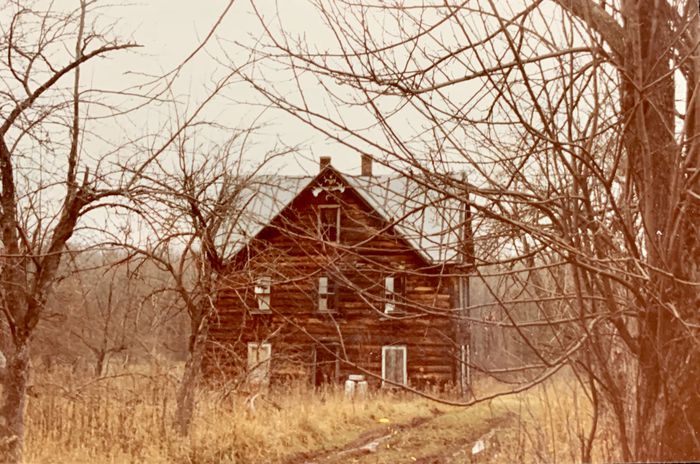
She turned left on a road before the lake’s entrance and discovered newly plotted parcels for sale. She knew what they should do: Buy one and build their family home over time on a tight budget.
Vera had learned to be resourceful. Her father died when his three children were young and her mother, who was penniless, got a job as a cook at the Wartburg Orphanage in Mount Vernon, New York. Her children were allowed to live with the orphans and see their mom once a week.
“I told Vera we don’t have enough money to build a house. She said, ‘we’re not going to live in a house; we’re going to live in a trailer,” remembers Peter, who jokes that he was a lucky “Princeton preppy” who found the love of his life. “Vera was truly amazing.”
They bought the land and the family of four moved into an enclosed travel trailer on site as Vera worked alongside contractor Jay Cooper of Ashland and other craftsmen to lay the foundation and slowly construct their home.
The couple paid $2,600 to have the frame of a Wisconsin farmhouse, erected before the Civil War, be dismantled and 4,000 board feet of old timber be shipped on a flatbed truck 2,200 miles to Ashland.
Long before the idea of using reclaimed wood in new houses was catching on for environmental and aesthetic reasons, Vera spotted a classified ad in “Old House Journal” magazine that made her project affordable.
The small ad was placed by landscape architect Tad Van Valin, who specializes in reclaiming hand-hewn log and timber frame houses in Wisconsin.

Corresponding over a series of letters, Van Valin finally wrote Vera that he had found a structure “worthy” of being reconstructed.
He conducted architectural and historic research and discovered that the original owners, Martin and Augusta Schultz, like the Kirkpatricks, needed a homestead built to last.
Sometime before 1860, the Schultz family from Prussia cleared their land and shaped new timber for their farmhouse. They assembled the pieces on the ground and raised the frame by hand, one side at a time, with members of their Sheboygan community.
In 1984, the Kirkpatricks had the advantage of renting a crane to raise the same frame. But there was a lot of other do-it-yourself handiwork.
“Every shingle had to be cut to size, wire brushed, stained and individually dried out,” says Peter, pointing to a photo of Vera under the shade of an oak tree cutting shingles.
Another photo shows Vera refinishing pocket doors from the late 19th century. She acquired the decorative sliding doors, along with a leaded glass window, from the ruins of an old Oregon structure.
Walls in the family room and alongside the main stairs show character-rich, salvaged bricks embedded among the old timber.
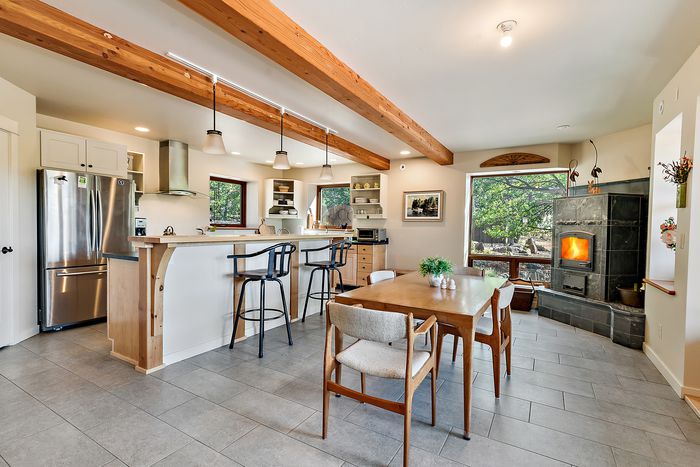
A newel post Vera brought with them from their home in Aspen, Colorado was installed at the base of wooden cubed stairs to an attic living space.
Reusing old materials kept expenses down, but the Kirkpatricks didn’t want a museum; they needed a sturdy, cozy home to lay down roots, raise their sons and continue their active, outdoor hobbies of hiking and skiing.
Their home has large windows that frame the landscape as well as Pilot Rock, which guided Oregon pioneers arriving through the Siskiyou Mountains, and the Soda Mountain Wilderness inside the protected Cascade–Siskiyou National Monument.
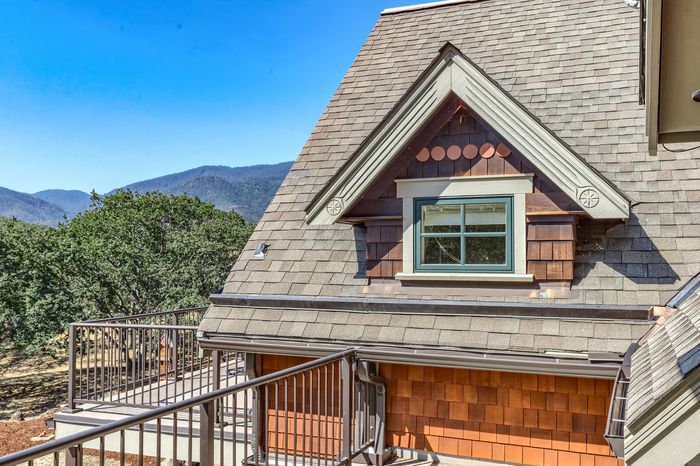
In 2017, they completed their long-awaited goal to expand their home with Vera working with Nick Dill of Dill Construction in Eagle Point. “Nick was warned that Vera was particular and they got along perfectly,” says Peter.
There’s a large kitchen and dining room as well as a new upstairs suite, creating a total of four bedrooms and sixbathrooms.
“I cannot feel any difference” between the original house and the addition, says Peter, as he’s standing under new exposed ceiling beams in the kitchen.
To prevent the summer sun from beating down too hard on south-facing glass panels, Vera added balconies to the second floor. In the winter, when the sun is lower, natural light slides into the living room, warming it.

“Vera wanted the house shaded for passive solar benefits. So she added those excellent balconies,” says Peter. “And I remember she and Nick Dill decided to support them with steel posts because wood would twist in the unrelenting sun.”
Vera, a self-taught designer, carpenter and landscaper, added a glass-roof lightwell in the center of the hallway to draw in light just as architect Frank Lloyd Wright did in the Gordon House in Silverton.
Lane of John L. Scott describes the Ashland dwelling as a “post-and-beam masterpiece” and “a true labor of love” with indoor and outdoor entertaining spaces, tree-shaded brick patios and a deer-deterring fenced garden.
The gated property also includes a detached garage with a workshop, loft, office and bathroom as well as a second buildable lot with its own well and irrigation rights.
“This home is spectacular,” says Lane, “and whoever lands here will create a new, fun story that builds on the legacy of a hard-working, stay-at-home mom, a wonderful woman who contributed a lot to her community.”
Source- https://www.oregonlive.com/realestate/2021/07/ashland-house-built-by-stay-at-home-mom-using-reclaimed-wood-for-sale-at-2-million.html
Source— Janet Eastman | 503-294-4072

